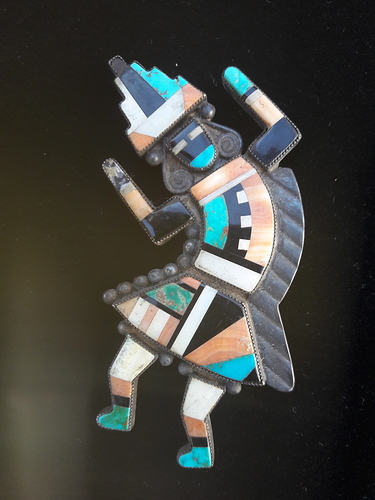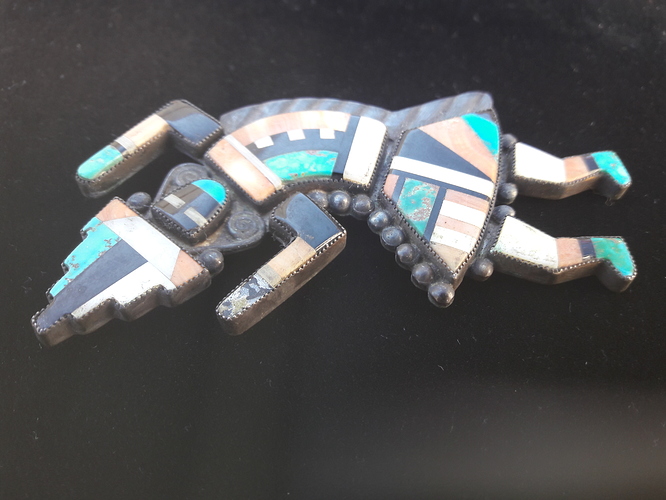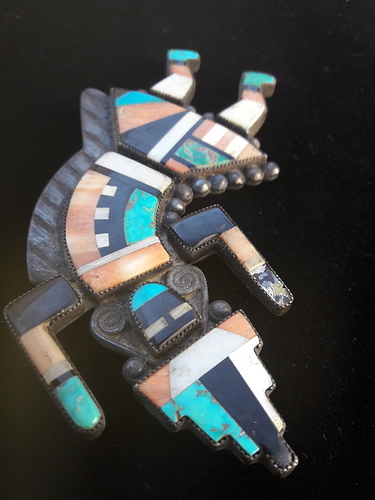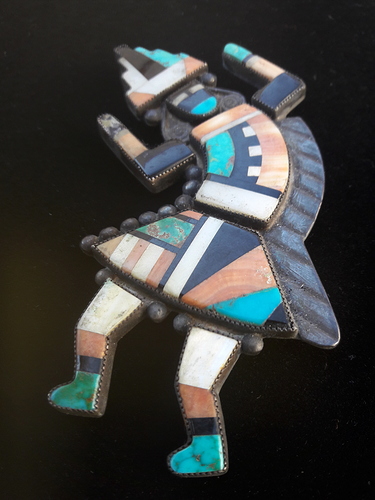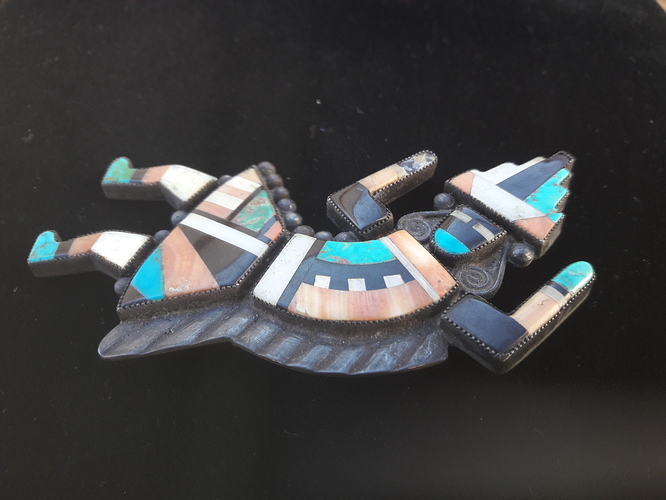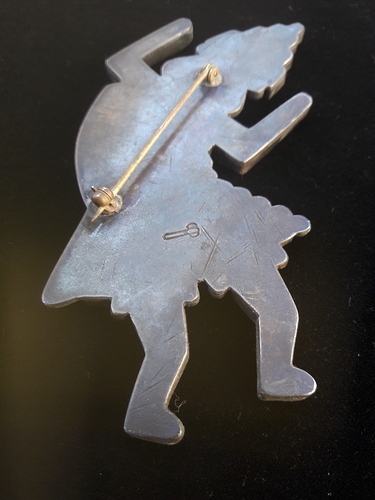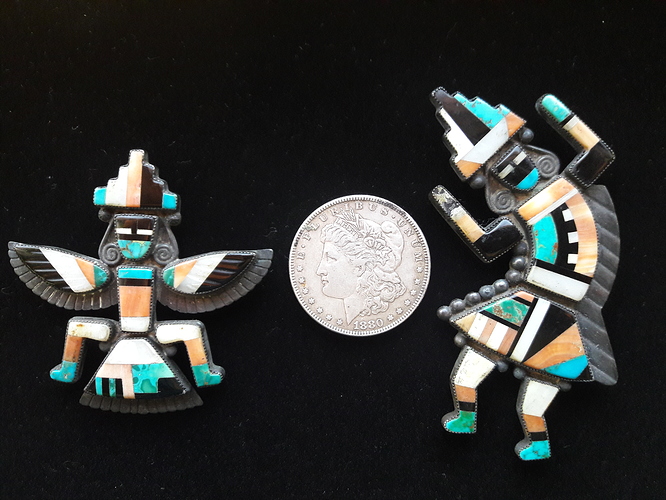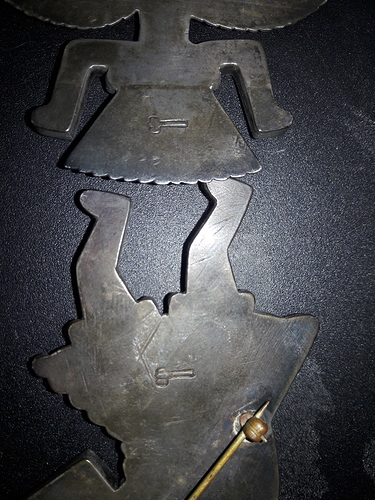He is 3-7/8" x 1-7/8" and weighs 42g. and is missing a turquoise hand that I’ll need to see about getting fixed.
They look so good together!
Wait til you see the last piece!! 


AC, these are killer. Do you know that the Messiers possibly attribute this hallmark to Austin Wilson in their book “Reassessing Hallmarks of Native Southwest Jewelry?” By the way, what is the last piece?
From what I’ve gathered, It could actually be any of the smiths that CG Wallace employed. I was going on this last sentence of the CG Wallace entry in Bille Hougart’s latest book.
This was the last piece.
Good sleuthing. Yes, I see that Hougart attributes it to C. G. Wallace smiths and Little Joe Begay specifically in at least in some cases. The Messiers don’t seem completely confident in their attribution but say “the tomahawk hallmark was probably used by Navajo silversmith Austin Wilson, who worked for C. G. Wallace and other Zuni traders.” Since Wilson worked for Wallace these assessments are not entirely inconsistent.
And yes, I do remember seeing that other knifewing necklace of yours. Very nice.
Fantastic pieces! Vintage Arizona Highways stuff +++. Congratulations!!!
Would not be surprised if the black inlay is cut from old 78 phonograph records.
That’s interesting. I didn’t know they did that. Did they use any other black material besides jet?
Depression-era Kewa jewelry very distinctively includes a range of everyday materials because of shortages of real turq/coral/jet/pearl. Crushed plastics and old 78s were typical. But for Zuni pieces, and things later than Depression era, the expectation for black inlay would be jet, or occasionally onyx.
I’ve also heard of using the black plastic cases of car batteries.
Using old record material is kind of cool, but plastic car battery cases? 
